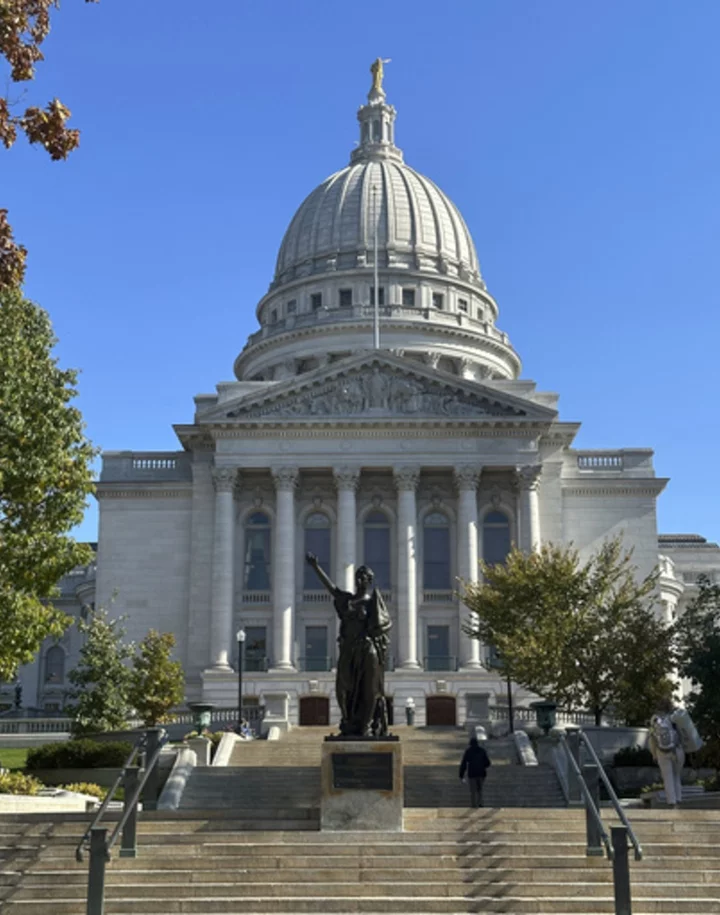MADISON, Wis. (AP) — The liberal-controlled Wisconsin Supreme Court is scheduled to hear arguments Tuesday in a redistricting case that Democrats hope will result in new, more favorable legislative maps for elections in 2024 that will help them chip away at the large Republican majority.
The case is being closely watched in battleground Wisconsin, a state where four of the past six presidential elections have been decided by fewer than 23,000 votes, but where Republicans have built large majorities in the Legislature under maps they drew over a decade ago.
Democratic voters who filed the lawsuit being heard by the court Tuesday argue that the maps passed in 2022, which vary little from those drawn in 2011, are unconstitutionally “unsalvageable” and must be struck down and redrawn. The Legislature counters that Democrats are exercising “raw political power” and trying to take advantage of the new liberal majority on the court to overturn its 2021 ruling that adopted the current maps.
The Wisconsin Supreme Court is controlled 4-3 by liberal justices, following the April election victory by Justice Janet Protasiewicz. She called the GOP-drawn maps “unfair” and “rigged” during the campaign, leading Republicans to threaten to impeach her before she had even heard a case. Republican Assembly Speaker Robin Vos backed off for now, but has kept the threat alive if she votes to strike down the maps.
Democrats want the court to strike down the legislative maps, draw new ones, and order elections under those maps for all 132 state lawmakers in 2024. If the court were to rule that way, the case would certainly be appealed to the U.S. Supreme Court and it's unclear whether there would be a ruling in time for the 2024 election.
The Legislature argues that if new maps are ordered, nothing should be enacted any sooner than the 2026 election.
Litigation is ongoing in more than dozen states over U.S. House and state legislative districts enacted after the 2020 census. New York is among the most prominent. The state’s highest court heard arguments last week on whether an independent redistricting commission must take another crack at drawing congressional districts. Democrats are hoping a redraw could help them gain seats and, potentially, the House majority.
New Mexico’s Supreme Court heard arguments Monday on an appeal of a lower court ruling that rejected assertions the Democratic-led Legislature had illegally gerrymandered the state’s congressional districts. Last week, a federal judge in North Dakota ruled that state legislative districts drawn by the Republican majority violated the voting rights of two Native American tribes and must be redrawn by Dec. 22.
The Democrats' case in Wisconsin centers on whether the current districts are not contiguous and if they violate the Wisconsin Constitution’s separation of powers doctrine.
The majority of current legislative districts — 54 out of 99 in the Assembly and 21 out of 33 in the Senate — violate the state constitution’s contiguity requirement, attorneys challenging the maps argued in filings with the court.
That makes Wisconsin an outlier nationally, with 46 other states having no noncontiguous districts, and Pennsylvania, Massachusetts and Tennessee having a total of nine noncontiguous districts, attorneys argued.
Wisconsin’s redistricting laws, backed up by state and federal court rulings over the past 50 years, have permitted districts under certain circumstances to be noncontiguous, attorneys for the Legislature argued. Even if the court decided to address the issue, it could only affect alleged areas where districts aren’t contiguous and not upend existing district lines, Republicans argued.
Those seeking new maps contend that the Supreme Court violated the separation of powers doctrine when it adopted the Republican-drawn map that Democratic Gov. Tony Evers had previously vetoed, “improperly seizing powers for itself the Constitution assigns to other branches.”
The legislative electoral maps drawn by the Republican-controlled Legislature in 2011 cemented the party’s majorities, which now stand at 64-35 in the Assembly and a 22-11 supermajority in the Senate.
Since taking the majority in 2011, Republicans have enacted a wide range of conservative priorities. They have all but eliminated collective bargaining for public workers, and since 2019 they’ve been a block on Evers’ agenda, firing Evers appointees and threatening impeachment of Protasiewicz and the state’s elections leader.
Republicans are also just two seats short of a supermajority that would allow them to overturn Evers’ vetoes.
Wisconsin’s Assembly districts rank among the most gerrymandered nationally, with Republicans routinely winning far more seats than would be expected based on their average share of the vote, according to an Associated Press analysis.
___
Associated Press writers David Lieb in Jefferson City, Missouri, and Harm Venhuizen in Madison contributed to this report.

